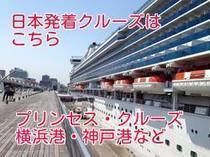The "New Style of Travel" and Changes in the Travel Environment
(1) Changes in the domestic economic structure and the emergence of seasonal "stay-and-go" travel and "local" TV programs
The industrial base in the U.S. changed in the postwar period, and the military industry grew significantly, especially in the Great Lakes region, with Chicago and other Great Lakes cities in the southwest and Pittsburgh and other areas being referred to as the Great Lakes Industrial Zone. The rapid growth of the urban population, especially the working class, changed their lifestyles and extended to vacations and travel away from the workplace.
The increased labor participation of women during the war also drastically changed the income structure of families, and the new clientele, who now had more time and money to spend, differed from the prewar "hometown trips" and "family reunions" to visit family members and others.
They chose a new form of "seasonal stay-and-go travel. Just like the German poet Goethe's "Trip to Italy" in the late 18th century, a group of winter travelers, called "snowbirds," emerged from the cold north, mainly in the Midwest, seeking the "sun and sea" of the south.
In the southern islands facing the Caribbean Sea, besides sun and sea, they found new discoveries in environments different from their northern lives, such as the Carnival. Engraved by their own "staycation experience," they repeatedly visited and stayed in the region, becoming repeat visitors and a steady stream of travelers. Air travel expanded rapidly with the expansion of Pan Am Airlines and other route networks, and it was during this same period that long-distance travel was stimulated.
The 1960s ushered in the television era, and television programming was a major factor, with leading television station ABC teaming up with Warner Brothers (TV) to produce the Hollywood-based "Sunset 77" (1958) and the New Orleans-set "Bourbon Street" ( Bourbon Street" (1959), and "Surfside Six" (1960), which unfolded under the Miami sun, dominated prime time. These "local" TV shows, which focused on new "outdoor mobility-centric stories" set "on location," encouraged a new generation of travelers to explore new "destinations" around the country and abroad.
(The development of domestic highways (promoted by President Eisenberg) brought the mobility of automobiles and large vans to individual and family travelers, and rapidly changed travel styles that had traditionally relied on "scheduled long-distance buses and trains.
Route 66" (the highway from Chicago to Los Angeles), which before the war was known as "the road of immigrants" from eastern U.S. cities where immigrant ships made port calls, and after the war, where veterans' families and others moved in search of new jobs, was a TV movie (1960) based on events along this highway. It was enough to make many Americans who had never seen the ocean envision "warm, sun-drenched cities and the Pacific Ocean" ahead of them, and it stirred the desire for automobile travel.
As cars became commonplace, railroad companies such as Amtrak, which had been responsible for the transcontinental railroad, were forced to withdraw from this business.
【このカテゴリーの最新記事】
- no image
- no image
- no image
- no image
- no image
- no image




















